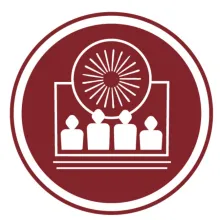
The Rebuilding Native Nations (RNN) Online Course examines critical governance and development challenges facing Native nations and surveys Native nation-rebuilding efforts across Indigenous and Indian Country. Sharing lessons learned from more than two decades of community-based research by Native Nations Institute and its sister organization the Harvard Project, it explores what is working, what isn't, and why as Native nations work to reclaim control over their own affairs and create vibrant futures of their own design. Our professional development-focused curriculum is self-paced and offers group learning activities for classroom and community settings.
-REGISTRATION RATES-
Intro Module 1: $250 Modules 2-9: $75 each All 9 Modules: $750
SCHOLARSHIPS AND Group discounts are available. PLEASE EMAIL US!

MODULE 1: Introduction to Native Nation Building
This module, updated in 2021, is the cornerstone of our RNN Online Course. It surveys the nation-rebuilding efforts of Native nations today and compares and contrasts the two approaches to economic and community development that they typically pursue. It presents the five critical keys to successful nation building, and begins to explore why these each of these keys is so important to sustainable economic and community development.
INSTRUCTORS:
Estimated Learning Time: 8-10 hours
Deadline to Complete Course: One month from date of enrollment
Price: $250.00
By the end of this course, students will understand:
• The basic political and socioeconomic challenges facing Native nations today
• Why the Standard Approach is a failed recipe for successful Native nation building
• The five components of the Nation-Building Approach and why Native nations who choose this approach are better able to achieve their development goals
1. What is nation building?
2. What explains the success that some Native nations have had in building sustainable, self-determined economies?
3. What are the fundamental differences between the Standard Approach and the Nation-Building Approach, and why does one work so much better than the other?
4. Why are capable governing institutions so critical to successful nation building?
5. What role does and should culture play in rebuilding Native nations?

MODULE 2: Remaking the Tools of Governance
This module provides a general overview of governance and government, and the relationship between the two. It examines traditional Indigenous governance systems, colonial impacts on those systems, and the contemporary legacies of colonial policies. Finally, it explores how Native nations are reclaiming their governance systems and creating governing tools that fit their cultures and meet the challenges they face today.
Estimated Learning Time: 15 to 18 hours
Deadline to Complete Course: One month from date of enrollment
Price: $75.00
By the end of this module, students will understand:
- What governance is, and why it is important
- The relationship — and differences — between self-determination and governance, and the challenges they present
- The breadth and diversity of traditional Indigenous governance systems
- How colonial policies impacted Indigenous governance and governments, and the contemporary legacies of those policies
- The fundamental difference between self-administration and self-governance
- How Native nations are remaking their tools of governance
- What is the relationship between self-determination and governance?
- What is governance? How is it different from government?
- Where does governance fit in the life of your nation?
- What impacts did colonialism have on Indigenous governance systems?
- How and why are Native nations reclaiming and remaking those systems?
- Where does governmental legitimacy come from? How do Native nations achieve it?
- Does the present design of your Native nation's government provide adequate tools for meeting the challenges the nation faces?
- If not, what steps should the nation take to equip itself with more effective governing tools?

MODULE 3: Constitutions
This module examines the role that constitutions --whether written or unwritten-- play in defending sovereignty, affirming identity, strengthening culture, developing economies, and simply getting things done. This module surveys the wave of reform sweeping across Indian Country, and spotlights Native nations that have reformed their constitutions to strengthen their governing systems and achieve their strategic priorities.
Estimated Learning Time: 15 to 18 hours
Deadline to Complete Course: One month from date of enrollment
Price: $75.00
By the end of this module, students will understand:
- The constitution — whether written or unwritten — is the fundamental organizing system of the nation.
- Many Native Nations are reforming their constitutions in order to move from self-administration to true self-governance.
- Effective constitutions address cultural identity and citizenship and provide capable institutions of self-governance.
- They also clearly define who has what powers, rights and responsibilities, and how disputes will be resolved.
- The current wave of constitutional reform reflects the diverse cultures, political structures, needs and priorities of Native nations.
- What is a "constitution" For the purposes of this course, how does the Native Nations Institute define it?
- What are the fundamental purposes that Native nation constitutions should serve?
- What role can and does a constitution — whether written or unwritten — play in Native nation rebuilding?
- What are the common ingredients of effective constitutions?
- Why are a growing number of Native nations reforming their constitutions? What are the common themes of their reform efforts? What are they seeking to change?
- What are the key choices that Native nations should consider when engaging in constitutional reform?
- How are Native nations strengthening their governance systems through constitutional reform? What are the practical lessons other nations can learn from?

MODULE 4: Justice Systems

Robert Williams, Jr., JD (Lumbee)
E. Thomas Sullivan Professor of Law and American Indian Studies and Director of the Indigenous Peoples Law and Policy Program, University of Arizona
This module provides a general overview of Native nation justice systems and demonstrates their importance to the process of nation building. Native justice systems encompass a wide range of related institutions, such as courts, law enforcement, and treatment facilities. These systems are critical to Native nations for everything from making and implementing decisions to attracting economic development to enacting and protecting tribal sovereignty. Featuring the firsthand perspectives of more than 60 Native leaders and scholars, it presents several case studies of Native nations who have successfully rebuilt their justice systems.
Estimated Learning Time: 15 to 18 hours
Deadline to Complete Course: One month from date of enrollment
Price: $75.00
By the end of this module, students will understand:
- What tribal justice systems are, and why they are important
- How colonial policies impacted Indigenous justice systems, and the contemporary legacies of those policies
- The significance of having independent dispute resolution mechanisms
- The breadth and diversity of traditional Indigenous justice systems
- How Native nations are remaking their justice systems so that they align with cultural values
- What are the key components of a Native nation's justice system?
- How does a justice system define and enforce a Native nation's laws?
- What did Indigenous justice systems look like in pre-colonial times? What forms did they take?
- How did colonialism impact those systems?
- How are Native nations remaking their justice systems to effectively resolve disputes? Maintain law and order? Align with cultural values? Why are these efforts so important?
- What role does a justice system play in protecting, strengthening and expanding a Native nation's sovereignty?
- Why is it important that justice systems be strong and independent? What do strong and independent justice systems require?

MODULE 5: Administration
This module provides an overview of the role of bureaucracies in advancing nation-building efforts, the keys to effective governmental administration and program management, and the distinct roles elected leaders and administrators should play in making effective management happen.
Estimated Learning Time: 15 to 18 hours
Deadline to Complete Course: One month from date of enrollment
Price: $75.00
By the end of this module, students will understand:
- What encourages disconnected programs
- The typical results of programs-based approach to management
- The keys to effective program management
- The benefits of developing a systems-based approach to management
- The drawbacks of the "silo effect"
- The importance of cultivating skilled, experienced administrators
- The role of cultural legitimacy and effective governance in successful management
- The basic principles of both effective governance and management
- The appropriate roles of elected leaders and program directors in effective management
- What it takes to achieve productive management "flow"
- What is a bureaucracy's role in Native nation building?
- What goals drive — and should drive — a nation's programs and services?
- How can Native nations move from self-administration to true self-governance in the realms of program management and service delivery?
- Where does the "silo effect" come from, and how can Native nations overcome it?
- What must Native nations consider as they work to create effective bureaucracies?
- What are the appropriate roles of leaders in effective management?
- What are the appropriate roles of administrators in effective management?
- What do Native nations gain from effective program management?
- What do Native nations need to have in place for successful program management?

MODULE 6: Nation-Owned Enterprises
This module examines the challenges to creating and growing businesses owned and operated by Native nations, the keys to creating an environment that fosters enterprise success, and the role of elected leaders and other key players in that process. It features several case studies of Native nations who are working to build a sound environment of rules designed to foster sustainable economic development, specifically through nation-owned enterprises.
Estimated Learning Time: 15 to 18 hours
Deadline to Complete Course: One month from date of enrollment
Price: $75.00
By the end of this module, students will understand:
- The evolution of economic development in Indian country
- The goal of economic development for Native nations
- What a "thick" economy looks like, and why it is necessary
- The differences between a dependent economy and a productive economy
- The key building blocks of a productive economy
- The importance of insulating business from politics
- The separated model versus the council-run model: Which works better?
- The role of transparency in successful nation-owned enterprises
- Appropriate roles of councils, boards and CEOs
- The key foundations of good corporate governance
- What type of economy (dependent or productive) does your nation currently have?
- Has/how has your nation's economy evolved?
- What types of nation-owned and citizen- owned enterprises currently exist on nation lands? Beyond the nation's lands?
- What is the top priority of the enterprises that your nation owns and operates?
- Do your nation's nation-owned enterprises more closely resemble the council-run model or the separated model?
- With respect to your nation's nation-owned enterprises, are the roles of your nation's elected officials, enterprise CEO, enterprise board of directors, and enterprise managers clear?

MODULE 7: Citizen Entrepreneurship
This module examines the many benefits that small businesses can bring to Native nations, the obstacles that typically hinder small-business development in Indian Country, and the ways that Native nation governments can support businesses owned by their citizens.
Estimated Learning Time: 15 to 18 hours
Deadline to Complete Course: One month from date of enrollment
Price: $75.00
By the end of this module, students will understand:
- The many economic, social, cultural and political benefits of small businesses
- The fundamental challenges starting and growing a business on Native nation lands
- The cultural and historical roots of those challenges
- The critical role that a Native nation's governance environment plays in small business development
- The ways Native nation governments either intentionally or inadvertently discourage small business development
- Proven strategies Native nations can employ to foster businesses owned by their citizens
- How many citizen-owned businesses currently exist on your nation? What kinds of businesses are they?
- Do the nation's citizens currently have opportunities to purchase needed goods and services on the nation? Or do they need to leave the nation to obtain them?
- Does the culture of your nation support value individual success? Is the entrepreneurial spirit viewed positively by community members?
- Does your nation currently charge a tax on goods and services sold by small businesses on the reservation? How is that tax structured?
- If a citizen of your nation wanted to start a business on nation land, what formal process would they have to follow? How long does that process typically take?
- What is the state of your nation's physical infrastructure? Is it adequate to support citizen-owned businesses?
- Does your nation's government provide any sort of financial or technical support for citizens who own their own business or who are thinking about starting one? Or are there other organizations working locally that provide that support?

MODULE 8: Intergovernmental Relations

Jaime Pinkham (Nez Perce)
Former Executive Director, Columbia River Inter-Tribal Fish Commission
This module explores the growth in intergovernmental relationships between Native nations and federal, state, local, and other tribal governments. It examines the pros and cons of litigation versus negotiation in resolving intergovernmental conflicts, and demonstrates how Native nations across Indian Country are using formal intergovernmental agreements as important nation-building tools. Featuring the firsthand perspectives of more than 60 Native leaders and scholars, it presents case studies of several Native nations who have forged creative relationships with governmental and non-governmental partners to advance their strategic priorities and solve common problems.
Estimated Learning Time: 15 to 18 hours
Deadline to Complete Course: One month from date of enrollment
Price: $75.00
By the end of this module, students will understand:
- The factors driving the growth in intergovernmental and intertribal relationship building
- What Native nations should consider in deciding which path (litigation or negotiation) to pursue to resolve intergovernmental conflicts
- The ways intergovernmental agreements can serve as nation-building tools
- That the act of forging partnerships with other governments represents an exercise of tribal sovereignty, not a loss of it
- Some strategies Native nations can use to find common ground with other governments
- The keys to building effective, sustainable intergovernmental relationships
- Generally speaking, how would you characterize your nation's relationships with other governments (cooperative and supportive, difficult and confrontational, non-existent, etc.)?
- Does your nation currently have formal, cooperative agreements with other governments other than the federal government (for example, with a state agency, with a county, with a municipality)? In what areas (law enforcement, social services, taxation, natural resource management, etc.)?
- What successful intergovernmental relationships has your nation cultivated, and what benefits have those relationships brought the nation?
- Do you know of instances in which your nation attempted to build intergovernmental relationships but failed? If so, what factors contributed to those failures?
- Based on what you know, is your nation effective at building productive intergovernmental relations? Why/why not?
- Are there things your nation could do to improve its relations with other governments?
- Does your nation currently have a dedicated office and/or staff whose job it is to initiate and strengthen relationships with other governments? If not, do you think it should?

MODULE 9: Public-Spirited Leadership
This module explores how Native nations are reclaiming their governance systems and creating governance tools that fit their cultures and advance their nation-building goals. It provides an overview of the unique set of challenges facing Native nation leaders, and explores the critical role that leadership plays in the nation-building process. Featuring the firsthand perspectives of more than 75 Native leaders and scholars, it paints a sharp contrast between the standard and nation-building approaches to leadership, and presents more than a dozen strategies that nation-building leaders typically pursue.
Estimated Learning Time: 15 to 18 hours
Deadline to Complete Course: One month from date of enrollment
Price: $75.00
By the end of this module, students will understand:
- The standard approach to leadership inevitably results in failed nation-building efforts.
- Leaders are not just decision-makers. They also must be students and educators.
- Nation-building leaders help their nations set strategic priorities and then govern according to those priorities.
- Defining — and differentiating between — the appropriate roles and responsibilities of leaders, employees and citizens is vital to successful nation building.
- Nation-building leaders establish and strengthen the rule of law and ensure that everyone is held accountable to that rule — including themselves.
- Nation-building leaders work to develop capable governance systems and capable people to operate those systems and get the job done today and in the future.
- Perhaps most importantly, they continually ask themselves, "What legacy am I leaving my nation?"
- What are the distinct challenges facing the leaders of Native nations?
- What role does leadership play in Native nation building?
- How are the standard and nation-building approaches to leadership fundamentally different?
- How can leaders move their nations from self-administration to true self-governance?
- What are some effective strategies that nation-building leaders commonly pursue?
- What is role confusion, where does it come from, and how does it impact Native nation governance and leadership?
- What are the appropriate roles of leaders, and what are the inappropriate roles of leaders?





